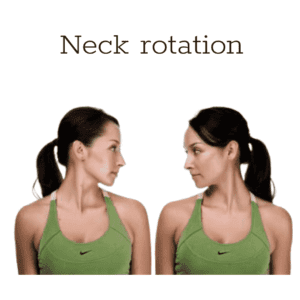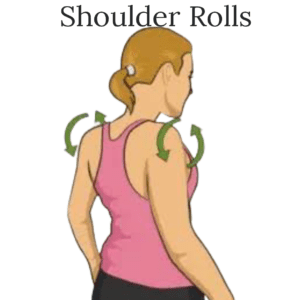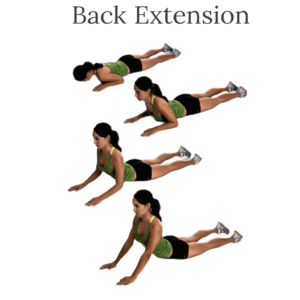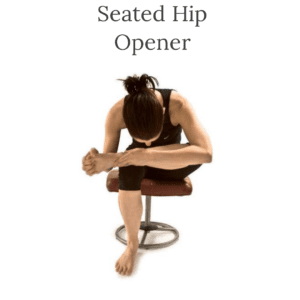Last updated on July 14th, 2025 at 01:03 pm
The physical demands of dentistry are unique and can lead to various musculoskeletal disorders if proper ergonomic practices are not followed.
Thus to maintain optimal physical fitness it is very essential to understand and meticulously perform these exercises.
Table of Contents
Introduction
Repetitive strain injuries are particularly prevalent among dental professionals, caused by performing the same motions repeatedly over time.
Performing regular exercises for dentists is crucial because it directly impacts the health and longevity of their dental practice.
Potential Risks of Poor Posture of Dentists
- Musculoskeletal Disorders: Dental professionals often suffer from problems like back pain, neck strain, and carpal tunnel syndrome due to prolonged periods of poor posture and repetitive movements.
- Nerve Compression: Awkward positioning during procedures can compress nerves, leading to conditions like thoracic outlet syndrome or radial nerve entrapment.
- Decreased Blood Flow: Additionally, prolonged static positions can decrease blood flow to certain areas of the body, contributing to issues like blood pooling and numbness.
- Vision Strain: Improper lighting and chair positioning can strain the eyes, contributing to visual fatigue and discomfort.
- Dental Loupes and Vision Issues: Dentists who frequently use dental loupes may develop muscle imbalances and neck strain due to the weight and angle of the loupes.
- Poor posture during procedures can lead to chronic pain, discomfort, and long-term damage.
Common Physical Issues Faced by Dentists
Dentistry is a demanding profession that requires long hours of precise and focused work.
Unfortunately, many dental professionals experience a range of physical issues that can impact their quality of life and career longevity.
Back Pain and Spinal Discomfort
Back pain is one of the most common complaints among dentists.
The nature of dental work often involves leaning forward and hunching over patients, leading to poor spinal alignment.
Over time, this can cause muscular imbalances, strained ligaments, and even vertebral misalignment.
A lack of proper lumbar support in chairs, inadequate patient positioning and incorrect work surface heights can all contribute to chronic back issues.
Neck and Shoulder Strain
Dentists frequently lean forward and crane their necks to get a better view of the oral cavity.
This position places excessive strain on the neck and shoulder muscles, leading to discomfort and potential long-term problems.
Inadequate lighting setups can worsen the problem, as dentists strain their necks to achieve proper illumination.
Wrist and Hand Discomfort
Performing dental procedures involves repetitive movements of the wrists and hands, which can lead to conditions like carpal tunnel syndrome and tendonitis.
The improper use of dental instruments and inadequate instrument grips can contribute to these problems.
Eye Strain and Visual Fatigue
Dentists often work in tight spaces and need to focus intently on small areas within the oral cavity.
This can lead to eye strain and visual fatigue, especially if the lighting is inadequate or the working distance is not properly adjusted.
Addressing these common physical issues requires a holistic approach that includes ergonomic equipment, proper training on posture and positioning, and a commitment to incorporating regular stretches and exercises into the daily routine.
Essential Exercises for Dentists
Maintaining a healthy and pain-free body is integral to a successful dental career.
Dental professionals often experience physical strain due to the nature of their work.
This exercise routine is specifically tailored to address common problem areas—neck, shoulders, back, wrists, and hips—allowing dental professionals to counteract the ill effects of their profession .
Incorporating these exercises into your daily routine can significantly contribute to your physical betterment.
Neck Exercises For Dentists

Neck Stretches: Gently tilt your head to one side, bringing your ear toward your shoulder. Hold for 15-20 seconds, then switch sides. Repeat 3 times on each side to release tension in the neck muscles.

Neck Rotations: Slowly turn your head to one side, aiming to align your chin with your shoulder. Hold for 15-20 seconds, then repeat on the other side. Do 3 sets on each side to improve neck mobility.
Shoulder Exercises for Dentists:

Shoulder Rolls: Roll your shoulders forward in a circular motion for 10 seconds, then reverse the direction. This exercise helps relax shoulder muscles and increase blood flow.

Shoulder Blade Squeezes: Sit or stand up straight. Squeeze your shoulder blades together, hold for 5 seconds, then release. Repeat this exercise 10 times to improve upper back strength.
Back Exercises for Dentists:

Cat-Cow Stretch: On your hands and knees, alternate between arching your back upward (cow pose) and rounding it downward (cat pose). Repeat this sequence 10 times to enhance spinal flexibility.

Back Extensions: Lie face down and gently lift your upper body off the ground, using your hands for support. Hold for 10 seconds, then lower down. Perform 3 sets to strengthen the lower back.
Hip Exercises for Dentists:

Hip Flexor Stretch: Step forward into a lunge position with one foot, keeping your back straight. Gently press your hips forward to feel a stretch in the front of your hip. Hold for 15-20 seconds, then switch sides. Repeat 3 times on each side.

Seated Hip Opener: Sit on the edge of a chair and cross one ankle over the opposite knee. Gently press down on the raised knee to feel a stretch in the hip. Hold for 15-20 seconds, then switch sides. Perform 3 sets on each side.
Wrist Exercises for Dentists:

- Wrist Flexor Stretch: Extend one arm in front of you, palm facing up. Use your opposite hand to gently bend your wrist downward until you feel a stretch in your forearm. Hold for 15 seconds, then switch sides. Repeat 3 times on each side.
- Wrist Extensor Stretch: Extend one arm in front of you, palm facing down. Use your opposite hand to gently bend your wrist upward until you feel a stretch in your forearm. Hold for 15 seconds, then switch sides. Perform 3 sets on each side.
Incorporating Exercise into the Workday
In the demanding world of dentistry, finding time for exercises can be a challenge.
However, integrating these exercises into your daily routine is essential for maintaining physical well-being.
Seamless Integration of Exercises:
- Start the Day Right: Begin your day with a few minutes of stretching or gentle yoga to warm up your muscles and improve flexibility. This sets a positive tone for the day ahead.
- Chair-Based Exercises: Perform discreet chair-based exercises while waiting for patients or during breaks. This includes seated leg lifts, ankle circles, and seated torso twists.
- Procedure Intervals: Incorporate stretches and movements during procedures that allow for moments of rest. For instance, during a procedure pause, do a quick neck or shoulder stretch to release tension.
Taking Short Breaks and Stretching:
- Frequent Micro Breaks: Aim to take micro breaks every 20-30 minutes. Use this time to stand up, walk around, and perform a few stretches. This prevents muscles from becoming too stiff.
- Stretching Routine: Create a personalized stretching routine that you can perform during your breaks. Include stretches for the neck, shoulders, back, wrists, and hips. This routine will become a habit over time.
- Breathing Exercises: Incorporate deep breathing exercises into your breaks. Slow, deep breaths can help relax your body and clear your mind, reducing stress and tension.
Mindful Movement:
- Ergonomic Reminders: Place visual cues or reminders around your workspace to prompt you to adjust your posture, take breaks, or perform specific exercises.
- Mind-Body Connection: Be mindful of your body’s cues. If you notice tension building up, take a moment to stretch and release the tension before it escalates.
Team Accountability:
- Encourage a Supportive Environment: Encourage your dental team to participate in these exercises. This fosters a culture of well-being and can make exercising together more enjoyable.
- Scheduled Exercise Times: Consider setting specific times during the day when the entire team can do a quick stretch or exercise routine together.
Incorporating exercise into the workday isn’t just beneficial for physical health; it also enhances mental clarity, productivity, and overall job satisfaction.
Understanding Dental Ergonomics
Dental professionals often spend extended periods performing intricate tasks that demand precision and concentration.
Dental ergonomics is the science of designing work environments and tools to optimize human performance while minimizing the risk of injury or strain.
It involves creating setups that support proper body posture, reduce physical stress, and enhance overall well-being.
Healthy Practices in the Dental Office
Properly designing the dental operatory can significantly reduce the risk of physical discomfort and injuries.
Setting Up the Workspace for Posture and Comfort
- Chair Selection: Choose dental chairs that are adjustable in height, backrest angle, and lumbar support. A well-fitted chair encourages a neutral posture and reduces the strain on the back and neck.
- Patient Chair Height: Ensure the patient chair can be positioned at a level that allows the dentist to work comfortably without leaning forward excessively. This minimizes neck and back strain.
- Instrument Placement: Organize dental instruments within easy reach to prevent unnecessary stretching movements during procedures. This reduces the risk of overreaching and strain.
- Assistant Positioning: Position dental assistants and hygienists ergonomically to support the dentist’s movements. This collaboration minimizes the need for twisting or turning during procedures.
Importance of Adjustable Chairs
An adjustable chair is a cornerstone of dental ergonomics. Dentists spend long hours seated, and the ability to customize chair settings ensures that their posture remains aligned and supported throughout the day.
Adjustable chairs help maintain the natural curve of the spine and provide lumbar support, reducing the risk of back pain and spinal discomfort.
The freedom to change positions as needed enhances blood circulation and reduces the strain on specific muscle groups.
Prioritizing Proper Lighting
Proper lighting is crucial for dental procedures, as it allows for accurate diagnosis and precise work.
Insufficient lighting can lead to eyestrain, which, over time, affects both visual health and overall comfort.
Implementing adjustable and focused lighting solutions, such as dental loupes with built-in LED lights, helps reduce glare and shadows.
This enables dentists to maintain good posture and avoid unnecessary straining of the eyes and neck.
Investing in Ergonomic Equipment
- Dental Loupes: Ergonomic dental loupes with adjustable magnification and focal length improve visibility and reduce the need to hunch over during procedures. This promotes a more comfortable posture and decreases neck strain.
- Ergonomic Stools: Dental stools with lumbar support and a swivel base allow dentists to move easily around the operatory without straining their back. The swivel base reduces the need for repetitive twisting.
- Ergonomic Hand Instruments: Choose hand instruments with ergonomic grips that reduce hand fatigue and minimize the risk of developing conditions like carpal tunnel syndrome.
Also Read some more useful posts.
Effective Use of Social Media Marketing for Dentists
Dental Fear and Anxiety: Strategies for Understanding and Effective Management
Conclusion
According to a study the overall prevalence of musculoskeletal problems in dentists was found to be 68.3%.
Another study shows that there are ample pieces of evidence about the role of ergonomics, education and exercises in primary and secondary prevention of musculoskeletal pain in dentists. These interventions can be introduced to dentists as primary prevention to avoid neck and back problems.
It’s crucial to recognize that regular exercises and dental ergonomics isn’t just a luxury but a necessity for sustaining a long and successful career in dentistry.

This site really has all the information and facts I wanted concerning this subject and didn’t know
who to ask.
Very good post! We will be linking to this particularly great
article on our site. Keep up the great writing.